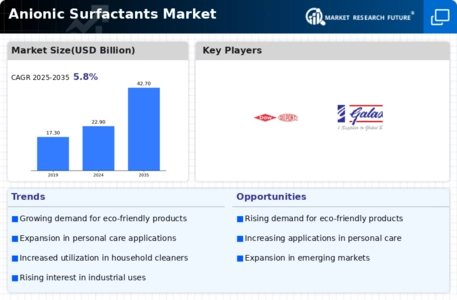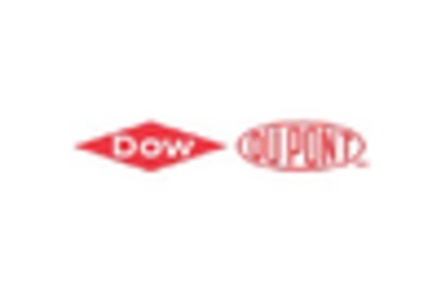-
MARKET INTRODUCTION
-
\r\n
-
\r\n2.1. Definition
-
\r\n
-
\r\n2.2.
-
Scope of the Study
-
\r\n
-
\r\n2.2.1. Research Objective
-
\r\n
-
\r\n2.2.2.
-
Assumptions
-
\r\n
-
\r\n2.2.3. Limitations
-
\r\n
-
\r\n3.
-
RESEARCH METHODOLOGY
-
\r\n
-
\r\n3.1. Overview
-
\r\n
-
\r\n3.2.
-
Data Mining
-
\r\n
-
\r\n3.3. Secondary Research
-
\r\n
-
\r\n3.4.
-
Primary Research
-
\r\n
-
\r\n3.4.1. Primary Interviews and Information
-
Gathering Process
-
\r\n
-
\r\n3.4.2. Breakdown of Primary Respondents
-
\r\n
-
\r\n3.5.
-
Forecasting Model
-
\r\n
-
\r\n3.6. Market Size Estimation
-
\r\n
-
\r\n3.6.1.
-
Bottom-Up Approach
-
\r\n
-
\r\n3.6.2. Top-Down Approach
-
\r\n
-
\r\n3.7.
-
Data Triangulation
-
\r\n
-
\r\n3.8. Validation
-
\r\n
-
\r\n4.
-
MARKET DYNAMICS
-
\r\n
-
\r\n4.1. Overview
-
\r\n
-
\r\n4.2.
-
Drivers
-
\r\n
-
\r\n4.3. Restraints
-
\r\n
-
\r\n4.4.
-
Opportunities
-
\r\n
-
\r\n5. MARKET FACTOR ANALYSIS
-
\r\n
-
\r\n5.1.
-
Value Chain Analysis
-
\r\n
-
\r\n5.2. Porter’s Five Forces
-
Analysis
-
\r\n
-
\r\n5.2.1. Bargaining Power of Suppliers
-
\r\n
-
\r\n5.2.2.
-
Bargaining Power of Buyers
-
\r\n
-
\r\n5.2.3. Threat of New Entrants
-
\r\n
-
\r\n5.2.4.
-
Threat of Substitutes
-
\r\n
-
\r\n5.2.5. Intensity of Rivalry
-
\r\n
-
\r\n5.3.
-
COVID-19 Impact Analysis
-
\r\n
-
\r\n5.3.1. Market Impact Analysis
-
\r\n
-
\r\n5.3.2.
-
Regional Impact
-
\r\n
-
\r\n5.3.3. Opportunity and Threat Analysis
-
\r\n
-
\r\n6.
-
GLOBAL ANIONIC SURFACTANTS MARKET, BY TYPE
-
\r\n
-
\r\n6.1. Overview
-
\r\n
-
\r\n6.2.
-
Linear Alkylbenzene Sulfonate
-
\r\n
-
\r\n6.3. Lignosulfonate
-
\r\n
-
\r\n6.4.
-
Alcohol Ether Sulfates/Fatty Alcohol Sulfates
-
\r\n
-
\r\n6.5. Alkyl
-
Sulfates/Ether Sulfates
-
\r\n
-
\r\n6.6. Sarcosinates
-
\r\n
-
\r\n6.7.
-
Alpha Olefin Sulfonates
-
\r\n
-
\r\n6.8. Phosphate Esters
-
\r\n
-
\r\n6.9.
-
Others
-
\r\n
-
\r\n7. GLOBAL ANIONIC SURFACTANTS MARKET, BY APPLICATION
-
\r\n
-
\r\n7.1.
-
Overview
-
\r\n
-
\r\n7.2. Home Care
-
\r\n
-
\r\n7.3.
-
Personal Care
-
\r\n
-
\r\n7.4. Oil & Gas
-
\r\n
-
\r\n7.5.
-
Construction
-
\r\n
-
\r\n7.6. Others
-
\r\n
-
\r\n8.
-
GLOBAL ANIONIC SURFACTANTS MARKET, BY REGION
-
\r\n
-
\r\n8.1. Overview
-
\r\n
-
\r\n8.1.
-
North America
-
\r\n
-
\r\n8.1.1. US
-
\r\n
-
\r\n8.1.2.
-
Canada
-
\r\n
-
\r\n8.2. Europe
-
\r\n
-
\r\n8.2.1.
-
Germany
-
\r\n
-
\r\n8.2.2. France
-
\r\n
-
\r\n8.2.3.
-
UK
-
\r\n
-
\r\n8.2.4. Italy
-
\r\n
-
\r\n8.2.5. Spain
-
\r\n
-
\r\n8.2.6.
-
Rest of Europe
-
\r\n
-
\r\n8.3. Asia-Pacific
-
\r\n
-
\r\n8.3.1.
-
China
-
\r\n
-
\r\n8.3.2. India
-
\r\n
-
\r\n8.3.3.
-
Japan
-
\r\n
-
\r\n8.3.4. South Korea
-
\r\n
-
\r\n8.3.5.
-
Australia
-
\r\n
-
\r\n8.3.6. Rest of Asia-Pacific
-
\r\n
-
\r\n8.4.
-
Rest of the World
-
\r\n
-
\r\n8.4.1. Middle East
-
\r\n
-
\r\n8.4.2.
-
Africa
-
\r\n
-
\r\n8.4.3. Latin America
-
\r\n
-
\r\n9.
-
COMPETITIVE LANDSCAPE
-
\r\n
-
\r\n9.1. Overview
-
\r\n
-
\r\n9.2.
-
Competitive Analysis
-
\r\n
-
\r\n9.3. Market Share Analysis
-
\r\n
-
\r\n9.4.
-
Major Growth Strategy in the Global Anionic Surfactants Market,
-
\r\n
-
\r\n9.5.
-
Competitive Benchmarking
-
\r\n
-
\r\n9.6. Leading Players in Terms
-
of Number of Developments in the Global Anionic Surfactants Market,
-
\r\n
-
\r\n9.7.
-
Key developments and Growth Strategies
-
\r\n
-
\r\n9.7.1. New Product
-
Launch/Service Deployment
-
\r\n
-
\r\n9.7.2. Merger & Acquisitions
-
\r\n
-
\r\n9.7.3.
-
Joint Ventures
-
\r\n
-
\r\n9.8. Major Players Financial Matrix
-
\r\n
-
\r\n9.8.1.
-
Sales & Operating Income, 2022
-
\r\n
-
\r\n9.8.2. Major Players
-
R&D Expenditure. 2022
-
\r\n
-
\r\n10. COMPANY PROFILES
-
\r\n
-
\r\n10.1.
-
Akzonobel NV
-
\r\n
-
\r\n10.1.1. Company Overview
-
\r\n
-
\r\n10.1.2.
-
Financial Overview
-
\r\n
-
\r\n10.1.3. Products Offered
-
\r\n
-
\r\n10.1.4.
-
Key Developments
-
\r\n
-
\r\n10.1.5. SWOT Analysis
-
\r\n
-
\r\n10.1.6.
-
Key Strategies
-
\r\n
-
\r\n10.2. BASF SE
-
\r\n
-
\r\n10.2.1.
-
Company Overview
-
\r\n
-
\r\n10.2.2. Financial Overview
-
\r\n
-
\r\n10.2.3.
-
Products Offered
-
\r\n
-
\r\n10.2.4. Key Developments
-
\r\n
-
\r\n10.2.5.
-
SWOT Analysis
-
\r\n
-
\r\n10.2.6. Key Strategies
-
\r\n
-
\r\n10.3.
-
CLARIANT AG
-
\r\n
-
\r\n10.3.1. Company Overview
-
\r\n
-
\r\n10.3.2.
-
Financial Overview
-
\r\n
-
\r\n10.3.3. Products Offered
-
\r\n
-
\r\n10.3.4.
-
Key Developments
-
\r\n
-
\r\n10.3.5. SWOT Analysis
-
\r\n
-
\r\n10.3.6.
-
Key Strategies
-
\r\n
-
\r\n10.4. Croda International PLC
-
\r\n
-
\r\n10.4.1.
-
Company Overview
-
\r\n
-
\r\n10.4.2. Financial Overview
-
\r\n
-
\r\n10.4.3.
-
Products Offered
-
\r\n
-
\r\n10.4.4. Key Developments
-
\r\n
-
\r\n10.4.5.
-
SWOT Analysis
-
\r\n
-
\r\n10.4.6. Key Strategies
-
\r\n
-
\r\n10.5.
-
Evonik Industries AG
-
\r\n
-
\r\n10.5.1. Company Overview
-
\r\n
-
\r\n10.5.2.
-
Financial Overview
-
\r\n
-
\r\n10.5.3. Products Offered
-
\r\n
-
\r\n10.5.4.
-
Key Developments
-
\r\n
-
\r\n10.5.5. SWOT Analysis
-
\r\n
-
\r\n10.5.6.
-
Key Strategies
-
\r\n
-
\r\n10.6. Galaxy Surfactants
-
\r\n
-
\r\n10.6.1.
-
Company Overview
-
\r\n
-
\r\n10.6.2. Financial Overview
-
\r\n
-
\r\n10.6.3.
-
Products Offered
-
\r\n
-
\r\n10.6.4. Key Developments
-
\r\n
-
\r\n10.6.5.
-
SWOT Analysis
-
\r\n
-
\r\n10.6.6. Key Strategies
-
\r\n
-
\r\n10.7.
-
Huntsman Corporation
-
\r\n
-
\r\n10.7.1. Company Overview
-
\r\n
-
\r\n10.7.2.
-
Financial Overview
-
\r\n
-
\r\n10.7.3. Products Offered
-
\r\n
-
\r\n10.7.4.
-
Key Developments
-
\r\n
-
\r\n10.7.5. SWOT Analysis
-
\r\n
-
\r\n10.7.6.
-
Key Strategies
-
\r\n
-
\r\n10.8. Kao Corporation
-
\r\n
-
\r\n10.8.1.
-
Company Overview
-
\r\n
-
\r\n10.8.2. Financial Overview
-
\r\n
-
\r\n10.8.3.
-
Products Offered
-
\r\n
-
\r\n10.8.4. Key Developments
-
\r\n
-
\r\n10.8.5.
-
SWOT Analysis
-
\r\n
-
\r\n10.8.6. Key Strategies
-
\r\n
-
\r\n10.9.
-
Stepen Company
-
\r\n
-
\r\n10.9.1. Company Overview
-
\r\n
-
\r\n10.9.2.
-
Financial Overview
-
\r\n
-
\r\n10.9.3. Products Offered
-
\r\n
-
\r\n10.9.4.
-
Key Developments
-
\r\n
-
\r\n10.9.5. SWOT Analysis
-
\r\n
-
\r\n10.9.6.
-
Key Strategies
-
\r\n
-
\r\n10.10. Dowdupont
-
\r\n
-
\r\n10.10.1.
-
Company Overview
-
\r\n
-
\r\n10.10.2. Financial Overview
-
\r\n
-
\r\n10.10.3.
-
Products Offered
-
\r\n
-
\r\n10.10.4. Key Developments
-
\r\n
-
\r\n10.10.5.
-
SWOT Analysis
-
\r\n
-
\r\n10.10.6. Key Strategies
-
\r\n
-
\r\n11.
-
APPENDIX
-
\r\n
-
\r\n11.1. References
-
\r\n
-
\r\n11.2.
-
Related Reports
-
\r\n
-
\r\nLIST OF TABLES
-
\r\n
-
\r\nTABLE
-
GLOBAL ANIONIC SURFACTANTS MARKET, SYNOPSIS, 2025−2034
-
\r\n
-
\r\nTABLE
-
GLOBAL ANIONIC SURFACTANTS MARKET, ESTIMATES & FORECAST, 2025−2034 (USD
-
BILLION)
-
\r\n
-
\r\nTABLE 3 GLOBAL ANIONIC SURFACTANTS MARKET, BY
-
TYPE, 2025−2034 (USD BILLION)
-
\r\n
-
\r\nTABLE 4 GLOBAL ANIONIC
-
SURFACTANTS MARKET, BY APPLICATION, 2025−2034 (USD BILLION)
-
\r\n
-
\r\nTABLE
-
NORTH AMERICA: ANIONIC SURFACTANTS MARKET, BY TYPE, 2025−2034 (USD BILLION)
-
\r\n
-
\r\nTABLE
-
NORTH AMERICA: ANIONIC SURFACTANTS MARKET, BY APPLICATION, 2025−2034 (USD
-
BILLION)
-
\r\n
-
\r\nTABLE 7 US: ANIONIC SURFACTANTS MARKET, BY TYPE,
-
\r\n
-
\r\nTABLE 8 US: ANIONIC SURFACTANTS
-
MARKET, BY APPLICATION, 2025−2034 (USD BILLION)
-
\r\n
-
\r\nTABLE
-
CANADA: ANIONIC SURFACTANTS MARKET, BY TYPE, 2025−2034 (USD BILLION)
-
\r\n
-
\r\nTABLE
-
CANADA: ANIONIC SURFACTANTS MARKET, BY APPLICATION, 2025−2034 (USD BILLION)
-
\r\n
-
\r\nTABLE
-
EUROPE: ANIONIC SURFACTANTS MARKET, BY TYPE, 2025−2034 (USD BILLION)
-
\r\n
-
\r\nTABLE
-
EUROPE: ANIONIC SURFACTANTS MARKET, BY APPLICATION, 2025−2034 (USD BILLION)
-
\r\n
-
\r\nTABLE
-
GERMANY: ANIONIC SURFACTANTS MARKET, BY TYPE, 2025−2034 (USD BILLION)
-
\r\n
-
\r\nTABLE
-
GERMANY: ANIONIC SURFACTANTS MARKET, BY APPLICATION, 2025−2034 (USD BILLION)
-
\r\n
-
\r\nTABLE
-
FRANCE: ANIONIC SURFACTANTS MARKET, BY TYPE, 2025−2034 (USD BILLION)
-
\r\n
-
\r\nTABLE
-
FRANCE: ANIONIC SURFACTANTS MARKET, BY APPLICATION, 2025−2034 (USD BILLION)
-
\r\n
-
\r\nTABLE
-
ITALY: ANIONIC SURFACTANTS MARKET, BY TYPE, 2025−2034 (USD BILLION)
-
\r\n
-
\r\nTABLE
-
ITALY: ANIONIC SURFACTANTS MARKET, BY APPLICATION, 2025−2034 (USD BILLION)
-
\r\n
-
\r\nTABLE
-
SPAIN: ANIONIC SURFACTANTS MARKET, BY TYPE, 2025−2034 (USD BILLION)
-
\r\n
-
\r\nTABLE
-
SPAIN: ANIONIC SURFACTANTS MARKET, BY APPLICATION, 2025−2034 (USD BILLION)
-
\r\n
-
\r\nTABLE
-
UK: ANIONIC SURFACTANTS MARKET, BY TYPE, 2025−2034 (USD BILLION)
-
\r\n
-
\r\nTABLE
-
UK: ANIONIC SURFACTANTS MARKET, BY APPLICATION, 2025−2034 (USD BILLION)
-
\r\n
-
\r\nTABLE
-
REST OF EUROPE: ANIONIC SURFACTANTS MARKET, BY TYPE, 2025−2034 (USD BILLION)
-
\r\n
-
\r\nTABLE
-
REST OF EUROPE: ANIONIC SURFACTANTS MARKET, BY APPLICATION, 2025−2034 (USD
-
BILLION)
-
\r\n
-
\r\nTABLE 15 ASIA-PACIFIC: ANIONIC SURFACTANTS MARKET,
-
BY TYPE, 2025−2034 (USD BILLION)
-
\r\n
-
\r\nTABLE 16 ASIA-PACIFIC:
-
ANIONIC SURFACTANTS MARKET, BY APPLICATION, 2025−2034 (USD BILLION)
-
\r\n
-
\r\nTABLE
-
JAPAN: ANIONIC SURFACTANTS MARKET, BY TYPE, 2025−2034 (USD BILLION)
-
\r\n
-
\r\nTABLE
-
JAPAN: ANIONIC SURFACTANTS MARKET, BY APPLICATION, 2025−2034 (USD BILLION)
-
\r\n
-
\r\nTABLE
-
CHINA: ANIONIC SURFACTANTS MARKET, BY TYPE, 2025−2034 (USD BILLION)
-
\r\n
-
\r\nTABLE
-
CHINA: ANIONIC SURFACTANTS MARKET, BY APPLICATION, 2025−2034 (USD BILLION)
-
\r\n
-
\r\nTABLE
-
INDIA: ANIONIC SURFACTANTS MARKET, BY TYPE, 2025−2034 (USD BILLION)
-
\r\n
-
\r\nTABLE
-
INDIA: ANIONIC SURFACTANTS MARKET, BY APPLICATION, 2025−2034 (USD BILLION)
-
\r\n
-
\r\nTABLE
-
AUSTRALIA: ANIONIC SURFACTANTS MARKET, BY TYPE, 2025−2034 (USD BILLION)
-
\r\n
-
\r\nTABLE
-
AUSTRALIA: ANIONIC SURFACTANTS MARKET, BY APPLICATION, 2025−2034 (USD BILLION)
-
\r\n
-
\r\nTABLE
-
SOUTH KOREA: ANIONIC SURFACTANTS MARKET, BY TYPE, 2025−2034 (USD BILLION)
-
\r\n
-
\r\nTABLE
-
SOUTH KOREA: ANIONIC SURFACTANTS MARKET, BY APPLICATION, 2025−2034 (USD
-
BILLION)
-
\r\n
-
\r\nTABLE 27 REST OF ASIA-PACIFIC: ANIONIC SURFACTANTS
-
MARKET, BY TYPE, 2025−2034 (USD BILLION)
-
\r\n
-
\r\nTABLE
-
REST OF ASIA-PACIFIC: ANIONIC SURFACTANTS MARKET, BY APPLICATION, 2025−2034
-
(USD BILLION)
-
\r\n
-
\r\nTABLE 29 REST OF THE WORLD: ANIONIC SURFACTANTS
-
MARKET, BY TYPE, 2025−2034 (USD BILLION)
-
\r\n
-
\r\nTABLE
-
REST OF THE WORLD: ANIONIC SURFACTANTS MARKET, BY APPLICATION, 2025−2034
-
(USD BILLION)
-
\r\n
-
\r\nTABLE 31 MIDDLE EAST: ANIONIC SURFACTANTS
-
MARKET, BY TYPE, 2025−2034 (USD BILLION)
-
\r\n
-
\r\nTABLE
-
MIDDLE EAST: ANIONIC SURFACTANTS MARKET, BY APPLICATION, 2025−2034 (USD
-
BILLION)
-
\r\n
-
\r\nTABLE 33 AFRICA: ANIONIC SURFACTANTS MARKET,
-
BY TYPE, 2025−2034 (USD BILLION)
-
\r\n
-
\r\nTABLE 34 AFRICA:
-
ANIONIC SURFACTANTS MARKET, BY APPLICATION, 2025−2034 (USD BILLION)
-
\r\n
-
\r\nTABLE
-
LATIN AMERICA: ANIONIC SURFACTANTS MARKET, BY TYPE, 2025−2034 (USD BILLION)
-
\r\n
-
\r\nTABLE
-
LATIN AMERICA: ANIONIC SURFACTANTS MARKET, BY APPLICATION, 2025−2034 (USD
-
BILLION)
-
\r\n
-
\r\nLIST OF FIGURES
-
\r\n
-
\r\nFIGURE
-
RESEARCH PROCESS
-
\r\n
-
\r\nFIGURE 2 MARKET STRUCTURE FOR THE
-
GLOBAL ANIONIC SURFACTANTS MARKET
-
\r\n
-
\r\nFIGURE 3 MARKET DYNAMICS
-
FOR THE GLOBAL ANIONIC SURFACTANTS MARKET
-
\r\n
-
\r\nFIGURE 4 GLOBAL
-
ANIONIC SURFACTANTS MARKET, SHARE (%), BY TYPE, 2022
-
\r\n
-
\r\nFIGURE
-
GLOBAL ANIONIC SURFACTANTS MARKET, SHARE (%), BY APPLICATION, 2022
-
\r\n
-
\r\nFIGURE
-
GLOBAL ANIONIC SURFACTANTS MARKET, SHARE (%), BY REGION, 2022
-
\r\n
-
\r\nFIGURE
-
NORTH AMERICA: ANIONIC SURFACTANTS MARKET, SHARE (%), BY REGION, 2022
-
\r\n
-
\r\nFIGURE
-
EUROPE: ANIONIC SURFACTANTS MARKET, SHARE (%), BY REGION, 2022
-
\r\n
-
\r\nFIGURE
-
ASIA-PACIFIC: ANIONIC SURFACTANTS MARKET, SHARE (%), BY REGION, 2022
-
\r\n
-
\r\nFIGURE
-
REST OF THE WORLD: ANIONIC SURFACTANTS MARKET, SHARE (%), BY REGION, 2022
-
\r\n
-
\r\nFIGURE
-
GLOBAL ANIONIC SURFACTANTS MARKET: COMPANY SHARE ANALYSIS, 2022 (%)
-
\r\n
-
\r\nFIGURE
-
AKZONOBEL NV: FINANCIAL OVERVIEW SNAPSHOT
-
\r\n
-
\r\nFIGURE 13
-
AKZONOBEL NV: SWOT ANALYSIS
-
\r\n
-
\r\nFIGURE 14 BASF SE: FINANCIAL
-
OVERVIEW SNAPSHOT
-
\r\n
-
\r\nFIGURE 15 BASF SE: SWOT ANALYSIS
-
\r\n
-
\r\nFIGURE
-
CLARIANT AG: FINANCIAL OVERVIEW SNAPSHOT
-
\r\n
-
\r\nFIGURE 17
-
CLARIANT AG: SWOT ANALYSIS
-
\r\n
-
\r\nFIGURE 18 CRODA INTERNATIONAL
-
PLC: FINANCIAL OVERVIEW SNAPSHOT
-
\r\n
-
\r\nFIGURE 19 CRODA INTERNATIONAL
-
PLC: SWOT ANALYSIS
-
\r\n
-
\r\nFIGURE 20 EVONIK INDUSTRIES AG: FINANCIAL
-
OVERVIEW SNAPSHOT
-
\r\n
-
\r\nFIGURE 21 EVONIK INDUSTRIES AG: SWOT
-
ANALYSIS
-
\r\n
-
\r\nFIGURE 22 GALAXY SURFACTANTS: FINANCIAL OVERVIEW
-
SNAPSHOT
-
\r\n
-
\r\nFIGURE 23 GALAXY SURFACTANTS: SWOT ANALYSIS
-
\r\n
-
\r\nFIGURE
-
HUNTSMAN CORPORATION: FINANCIAL OVERVIEW SNAPSHOT
-
\r\n
-
\r\nFIGURE
-
HUNTSMAN CORPORATION: SWOT ANALYSIS
-
\r\n
-
\r\nFIGURE 26 KAO
-
CORPORATION: FINANCIAL OVERVIEW SNAPSHOT
-
\r\n
-
\r\nFIGURE 27 KAO
-
CORPORATION: SWOT ANALYSIS
-
\r\n
-
\r\nFIGURE 28 STEPEN COMPANY:
-
FINANCIAL OVERVIEW SNAPSHOT
-
\r\n
-
\r\nFIGURE 29 STEPEN COMPANY:
-
SWOT ANALYSIS
-
\r\n
-
\r\nFIGURE 30 DOWDUPONT: FINANCIAL OVERVIEW
-
SNAPSHOT
-
\r\n
-
\r\nFIGURE 31 DOWDUPONT: SWOT ANALYSIS





Leave a Comment